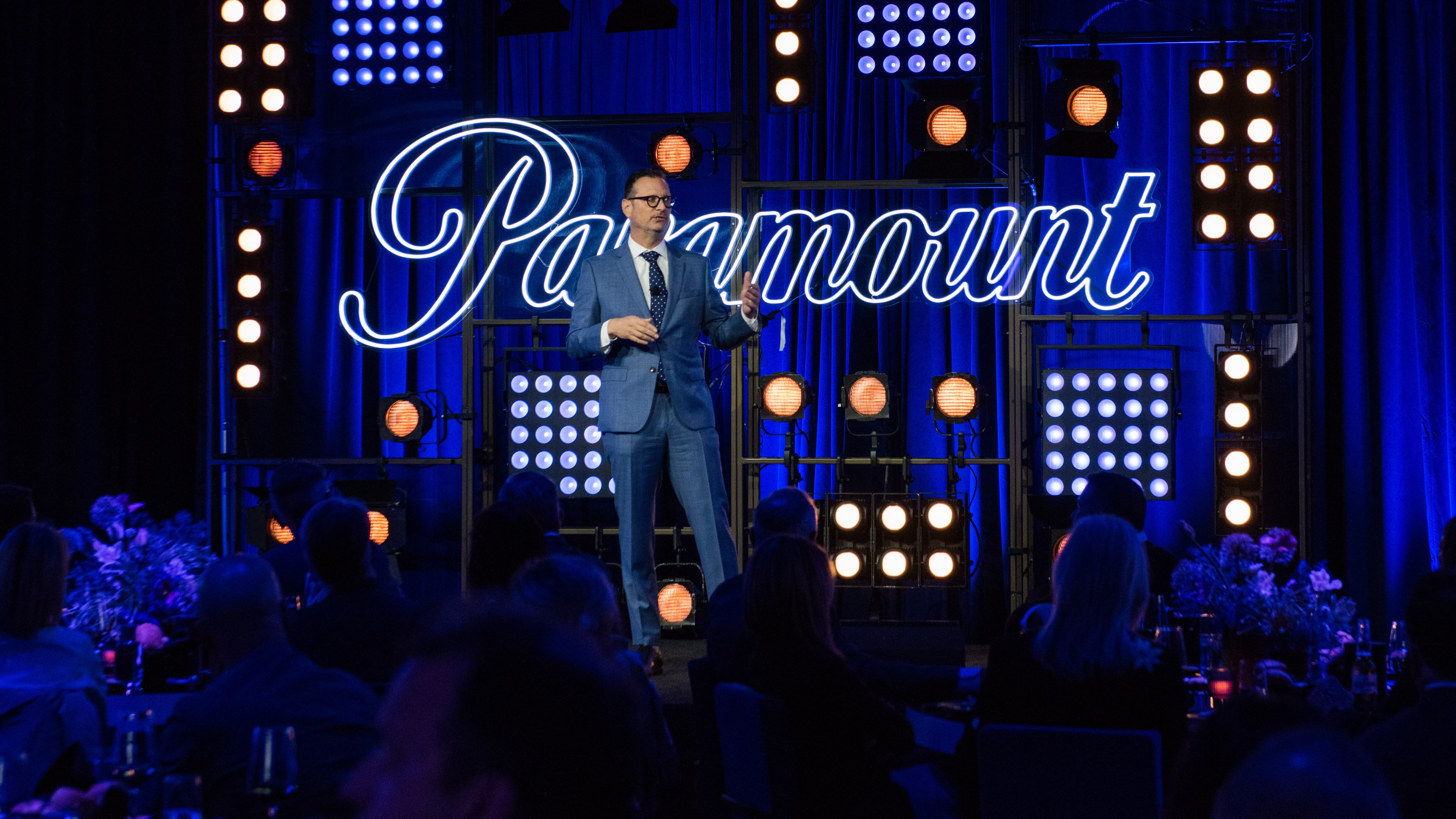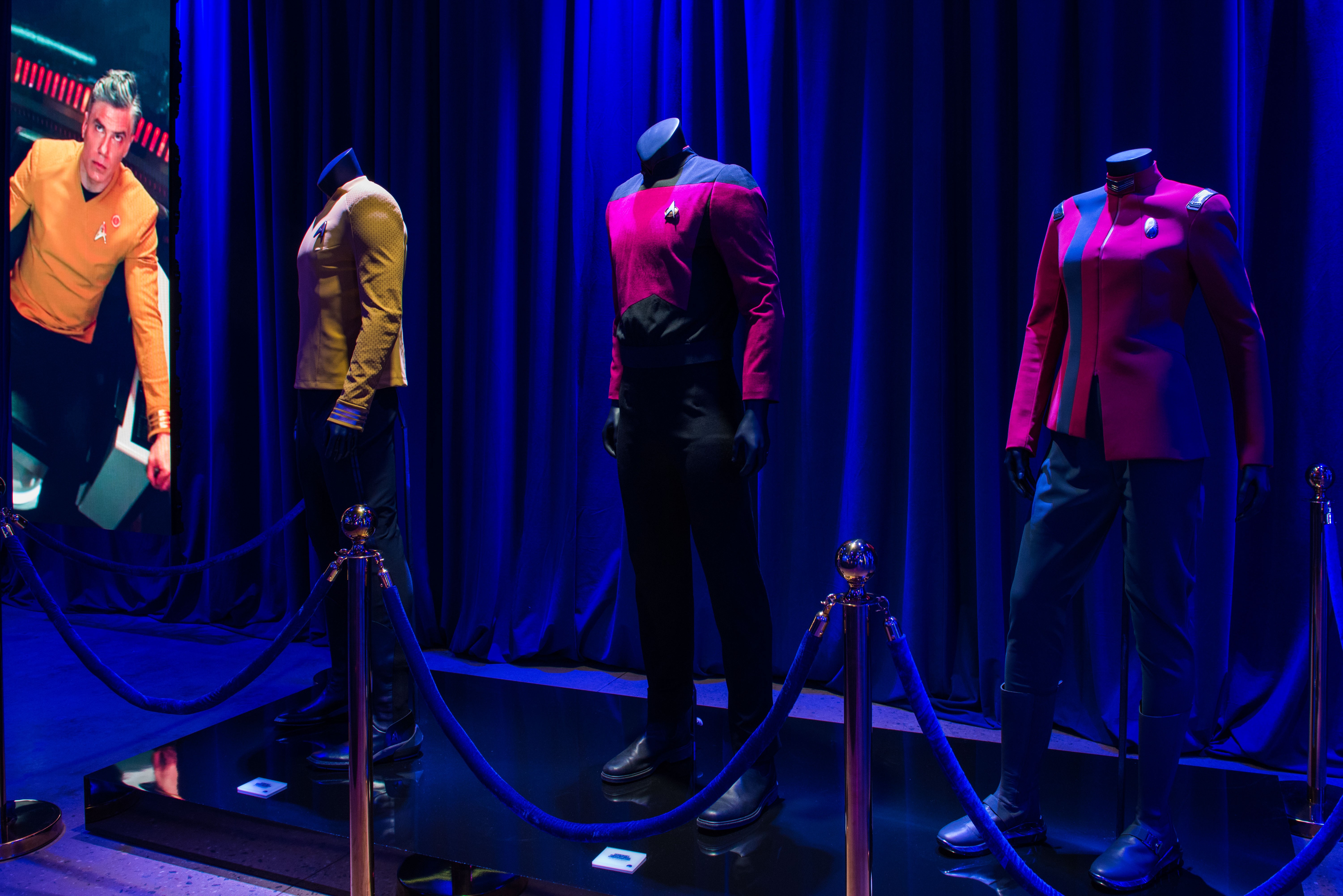Paramount Pleased As It Concludes Round of Smaller Upfront Dinners
‘We’re not going back to the old way of doing things,’ says ad sales head John Halley

A week before other media companies take to the stages of Radio City Music Hall and other giant venues to make upfront pitches to advertisers, Paramount Global is already finished.
Paramount owns CBS, perhaps the most traditional of the traditional broadcast networks. And CBS for years had the most opulent presentation at Carnegie Hall. This year, Paramount made a surprising decision to abandon tradition and hold a series of smaller meetings with specific groups of media buyers and clients
“We're not going back to the old way of doing things,” John Halley, who was named Paramount’s president of ad sales last year, told Broadcasting+Cable. “This just works better.”
Over two weeks, Paramount held meetings in New York with each of the six big media agency holding companies, a luncheon in New York with independent buyers and meetings in Chicago and Los Angeles. The theme of the meetings was “Popular Is Paramount.”
Like the Carnegie Hall presentations, the smaller meetings were star-studded with Stephen Colbert, Gayle King, Nora O’Donnell, Phil Simms and cast members from shows including Yellowstone and Teen Wolf appearing.
’Focused on Content’
In addition to the sales staff, buyers got to hear from Paramount CEO Bob Bakish, who attended all of the New York meetings and the programming heads of Paramount’s networks and streaming services — all part of what is being billed as “One Paramount.”
“The presentations have been very focused on content,” Halley said. “We really brought our partners close to the content engine and gave them a sneak peek inside that. That was the objective.”
Broadcasting & Cable Newsletter
The smarter way to stay on top of broadcasting and cable industry. Sign up below
CBS historically had announced its fall schedule at its upfront. This year, it is expected to release its fall schedule sometime this week.
Halley noted that a traditional upfront is attended by thousands of people. The parties are dark and loud, making conversation difficult. Most buyers have attended at least one other presentation that day. The messages get mushed together and it’s hard to remember who said what.
Paramount’s approach should make it stand out. “By the time it’s all said and done, it was an excellent environment for in-depth engagement around the upfront,” Halley. “We counter-programmed the upfront. We were the only ones doing it. It turned out to be very much to our advantage.”
David Campanelli, chief investment officer at Horizon Media, saw value in Paramount’s approach.
“Paramount was able to provide a much more succinct and meaningful content presentation, coupled with the opportunity for a more intimate face-to-face setting where discussions and conversations could take place,” Campanelli said.
At a time when media companies are cutting costs and eliminating staff, Paramount’s skipping Carnegie Hall saved the company a few bucks. The dinners were “more efficient because, in aggregate, [they] cost significantly less than the old model,” Bakish said last week while reporting disappointing first-quarter earnings.
Ad Market Stabilizing
In the quarter, Paramount’s TV Media ad revenues were down 11% amid a soft TV ad market. Streaming ad revenues were up 15% “There are signs of stabilization in the ad market. We like what we are seeing in many categories,” Bakish said.
Halley said that Paramount’s message to the buyers was that in a very complex, crowded, fragmented market, Paramount offered a solution.
“Yes, content is king, but simplicity must also share the throne,” he said.
“Through our content, we can scale huge audiences, whatever audience they’re looking for,“ Halley said. “We’ve got it where they want it. Also, all this content is long form. It’s watched on the big screen. That’s the greatest format for brand storytelling ever invented.”

Halley said Paramount had much to talk about with its advertising clients, starting with discussions around the next Super Bowl and opportunities in other tentpole programming. The smaller venue provided more of an opportunity to discuss potential integrations into upcoming programming.
Paramount pitched EyeQ, its digital platform, which has grown as streaming platforms Paramount Plus and Pluto TV have added scale. EyeQ has 90 million full-episode monthly unique viewers. That makes it almost as big as the cable universe at its peak, Halley said.
There was also conversation around currency and targeting.
Paramount is one of the media companies backing the Joint Industry Committee formed to set standards for measurement and establish multiple currencies, creating competition for Nielsen.
Halley noted that Nielsen has said it plans to sunset the current C3 and C7 commercial ratings in the fall of 2024. At that point, “there will be no more status quo in currency and we’re committed to working together to minimize disruption.”
Paramount is pumping its work in new currencies through its Vantage data-powered audience-targeting product. Paramount told buyers about a new Vantage tool that extends total reach and manages frequency for advertising partners across linear and digital buys
“Vantage is just increasingly becoming core to what we do as a company,” he said. “People are increasingly guaranteeing against audience segments that are behavioral or intent-based.”
Halley noted that Paramount’s targeting isn’t limited to its streaming product. “We can now connect that huge streaming audience back to linear through convergent optimization using the Vantage engine to maximize total reach across linear and digital, regardless of the guarantee structure to ensure that the advertiser’s dollars are going farther,” he said.
Next week, NBC, Fox and The Walt Disney Co. will be making presentations in what has historically been known as broadcast upfront week. Warner Bros. Discovery will present as well, along with YouTube and Netflix, which this year will be entertaining buyers in CBS’s old Wednesday evening time slot.
But Halley said he and his team won’t be experiencing what the kids call FOMO (the fear of missing out).
“We are going to be having breakfast, lunch and dinner with all the clients that are in town, so we will have an entire different set of obligations,” he said. “We’re really looking forward to it.”
Jon has been business editor of Broadcasting+Cable since 2010. He focuses on revenue-generating activities, including advertising and distribution, as well as executive intrigue and merger and acquisition activity. Just about any story is fair game, if a dollar sign can make its way into the article. Before B+C, Jon covered the industry for TVWeek, Cable World, Electronic Media, Advertising Age and The New York Post. A native New Yorker, Jon is hiding in plain sight in the suburbs of Chicago.

